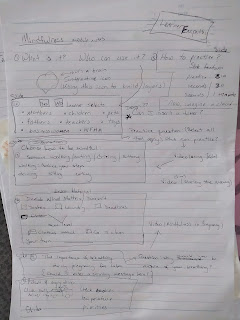PowerPoint Corruption
The Cognitive Style of Power Point: Pitching Out Corrupts Within
Oh, Powerpoint. Death by Powerpoint is a real issue. The best way to bore your audience is that tried-and-tired presentation by means of reading a collection of slides with simple graphics. As Tufte (2006) mentions, its been the standard among corporate and government businesses that includes bulleted lists and lacks overall quality.
The article goes into discussing how analytical data is trunked out on a PP through what he calls slideware. What's interesting is how he actually analyzes the structure of the slides. The author goes through the typical slideware protocol and addresses certain nuances about why this is a poor format. For instance, the "exposing the first line... then the second line... and the final line" was a great visual. Everyone has been there.
The issue, then, is that these Powerpoint presentations are not statistically relevant to their audience or in driving information. In fact, the style, according to Tuft, actually lends way to is actually distracting. Or disturbing -- what's someone to do with all that blank, white space?
The author shows some different ways to show data. For example, what's the better format for showing cancer data.
"People see, read, and think vastly differently than PP slides..." The basis of the presentation's flow doesn't even match our simplest comprehension and communication skills. Tufte also goes to mention the noise and contrast ratio is poor, which are concepts I've never considered about PP. Either way, he shows the value of having visually aesthetic presentations with rich content.
Refelcting on the reading...
I think the reason this article was included includes a few reasons. For one, it was a humorous review of some of the awkward memories I'm sure anyone who's been in a corporate or educational setting has been in. The dreaded PP and reading line-per-line and display of black text on a white background with a simple inserted graphic and maybe a clunky animation here and there.
Also, I think it's to make me think how can I apply what not to do in my design? Of course, it's very easy just to insert some words and keep moving, but this isn't student-centered, student-focused, student-engaged learning. Learning happens best when its interesting.
So, that's why it's so essential to create an interactive platform for learners. How can they engage with the material, so it's not like they're just reading from a slide? What features can I use to avoid falling into lazy instructional designer methods?
Take-away: Think about the learner when designing.
- Reference, article: Tufte, E. R. (2006). The cognitive style of PowerPoint: Pitching out corrupts within. Cheshire, Conn: Graphics Press.

Comments
Post a Comment